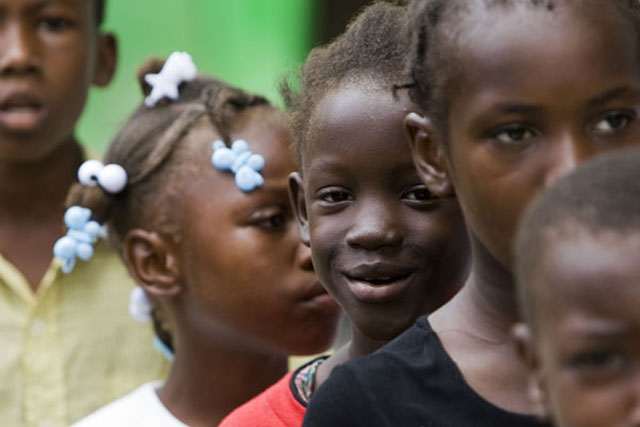 |
| Photo Credit: Plas Timoun |
However, there is a bright spot in Port- Au- Prince, where counselors and teachers are using art to bring a sense of creativity and normalcy to Haiti's kids. Plas Timoun, a psychotherapy rehabilitation center for children operated through Haiti's Ministry of Youth and Sports, is one of two centers working to reach kids suffering from post-traumatic disorder. There, teachers and therapists are slowly reintroducing students to their childhoods through activities such as painting, ceramics, drawing, and music, as a method of comfort and healing to deal with the the trauma they experienced during and after the earthquake. In the words of Haitian First Lady Elisabeth Preval,
The programs have a healing effect on the children's minds as evidenced by their artworks, which have gradually moved from a gloomy to a brighter outlook. With the guidance of experienced trainers, the art activities at Plas Timoun can reflect, and in fact communicate, what is happening in the minds of the children: both their suffering and their dreams for a better future.
Plas Timoun has helped about 900 children, and feeds 2,000 kids daily. In addition to art and music, this refuge gives children safe drinking water, nutrition, and a welcoming place to go during the day.
Currently about the size of Maryland, Haiti was originally colonized by the Spanish, but was ceded to the French Republic in 1697. Due to its prime location in the Caribbean Sea, Haiti was a regional commercial power as a prime trading hub for cane sugar, timber, and slaves. In 1804, Haiti became the first independent black republic, and the second independent state in the Americas. However, since independence, healthy political and economic growth has been stagnated by debilitating challenges, including poverty, natural disasters, political instability, crime, and violence.
 |
| Photo Credit: The Washington Post |
If you would like to contribute to reconstruction efforts in Haiti, please click here. If you would like to give to Plas Timoun, please click here.
No comments:
Post a Comment